Andrea Tsang Jackson is a textile artist and designer based in Halifax, Nova Scotia. She began sewing as a new mom, and parlayed her past experience in the architecture world into her quilt designs, where she explores her love of geometry, material, and place. In 2017, Andrea was the artist-in-residence at the Canadian Museum of Immigration at Pier 21. Her quilt, The Here and Elsewhere Bee, compiles nearly 1,200 immigration stories and assembles them into a 114″ x 108″ quilt. The project is a collaborative effort, with each of the almost 1200 blocks having been completed by a museum visitor, representing a bit of each visitor’s immigration narrative. Andrea is also a pattern designer, and her patterns can be purchased in her Etsy shop. In 2016, Andrea was the recipient of the Etsy Award for New Talent Canada, and she has been featured in Uppercase Magazine as well as on the Modern Sewciety podcast. Andrea’s The Here and Elsewhere Bee quilt hangs at QuiltCon this week in Pasadena and won 1st Place in the Group or Bee Quilt category! Congratulations and welcome, Andrea!
How would you describe your quilting style/aesthetic?
Andrea: Modern, flexible, contextualized. I can’t say that I have found a unified aesthetic yet. Each project I undertake meets parameters that are very different. The end user is always top of mind and that person is different each time.
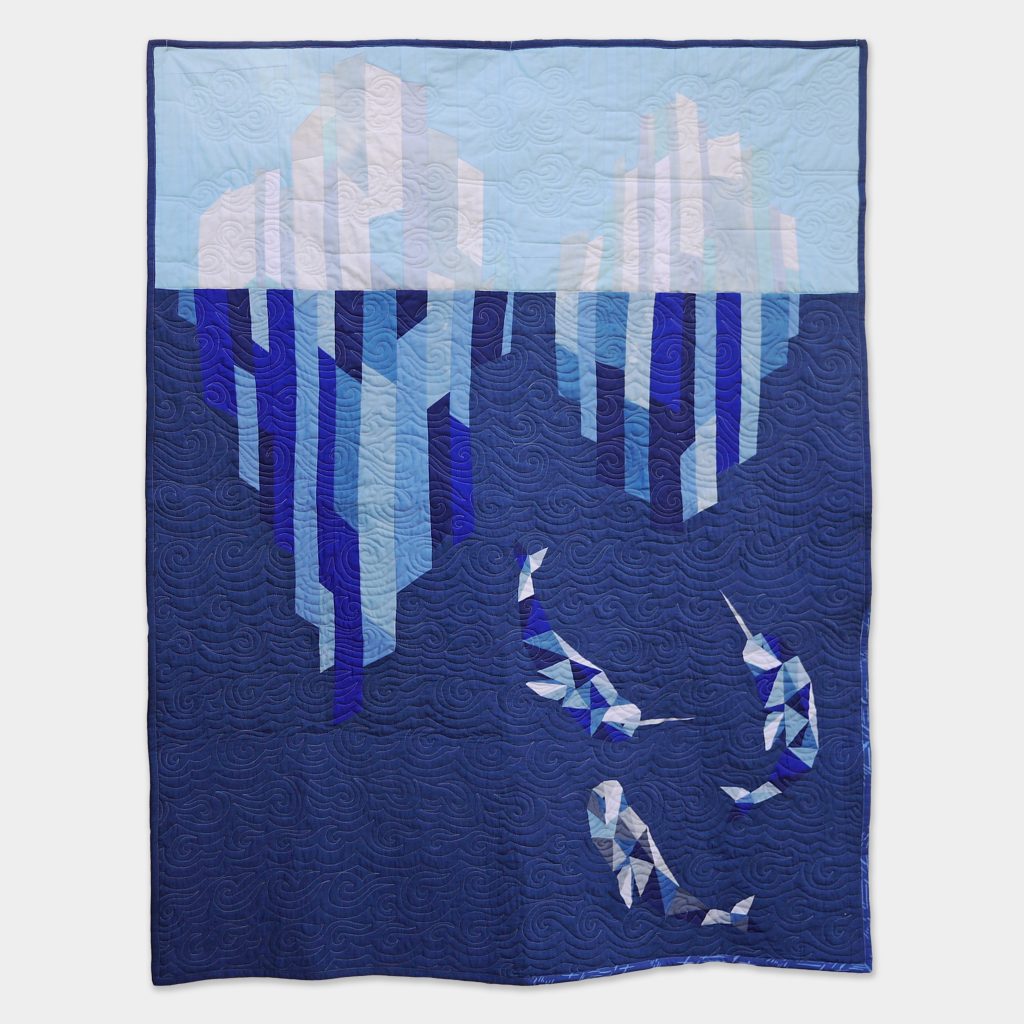
Andrea’s “Dancing Narwhal” patterns are available in her Etsy shop. Image Courtesy of Andrea Tsang Jackson.
How would you describe the creative environment in your home as a child?
Andrea: I would say that it was implicitly fertile. I would not describe my father as creative (nor would he), but my mom was. Before my mother went back to work when I was 8, she would create a great deal — design and sew dance costumes, school play costumes out of paper, Christmas and Easter dresses. She recently showed me some hand-quilting she had done decades ago in solids, which I never knew about. They’re in my studio now, awaiting inspiration.
My sister and I saw her create, but we were not a part of that process. I completely understand it from my perspective now as a mother — that it was maybe important for my mom to keep those projects separate from us even though they were for us. I think she wanted to own it, have it be her own thing, because when you’re a mother, you can be subsumed into that role, for better or for worse.
For my own pursuits, I was provided with everything I needed to create. The supplies and tools were there – jewelry, card-making, and model-making later on. This was the way my parents supported my creativity. Sewing didn’t become part of the picture until I was in my twenties and they gave me a sewing machine one Christmas.
What artists and makers do you most admire or have an influence on your work?
Andrea: To say that design and architecture are an influence would be an understatement; it permeates all aspects of my practice. However, I can’t name a single practitioner because it’s not necessarily an aesthetic or style, it’s a way of thinking and working. Two artists / makers that I really admire are:
Rachel Hayes: The scale and ethereal sense of Rachel’s work is really impactful.
Bookhou: Arounna Khounnoraj is a Toronto-based textile designer. Not only are her textiles beautiful and functional, but her work as a business-leader is inspiring. She shares her knowledge with others, and it’s great to see her involved with the maker and business community around her.
Do you consider yourself a “quilter”, an artist, or some combination of both?
Andrea: This is a question that I’ve given a lot of thought to in the last couple of years. There are four monikers that I use, all in different contexts: Textile artist, designer, quilter, maker. The way I use these terms has to do with how the receiver might understand the term.
When I am talking to another quilter, I’ll use quilter or quilt designer. They likely understand the world of quilting in a similar way than I do.
If I’m talking to an art crowd, art educators, my son’s class, or to a random person, I would use the term textile artist. People often have an image in their mind of what an artist does; they also have an image of what a quilter does. Although neither image is likely representative of my reality, their idea of artist is more in line with what I actually do.
If I’m conversing with other craftspeople or I’m at a craft show, I’ll use maker or quilter.
Designer is likely the hardest to explain to people, but that is the term I identify best with because I have been trained in that world. I know what designers do and this is how I approach my work — from creating a one-off piece, to designing patterns, to marketing, and to running a business.
Personally, the hardest one to come to terms with is artist. I’m still learning what this means, especially from a professional standpoint. This is now my profession, so I’m constantly trying to figure it out.
How would you define “making with intention”?
Andrea: Making with intention is a large aspect of the way I work. I often ask myself, “Why does the world need me to make this, design this, or talk about this?” If there is no answer other than “It’s beautiful,” then I try to stay away from it.
I don’t mean to diminish the value of beautiful things, because those bring so much joy to our lives. It’s just not in my mission to make the world a more beautiful place. Someone else can do that better than I can. Design does not serve the world by making it prettier. Design serves the world by making it better.
A graphic designer that carefully designs signage in a building wants you to get where you need to be without any trouble. An architect doesn’t make a beautiful home for you, she makes it work best for your needs.
This is my mission in the broadest sense: To educate and to illuminate through art and design. This small phrase has guided all of my professional work up till this point. If a project fits this mission, no matter its size or impact, it is worth serious consideration. It can manifest itself in the smallest ways. For instance, making a set of eight pincushions that become a visual dictionary of colour theory basics, so that another quilter might understand colour and use it more effectively in their own work. In larger ways, it might look like The Here & Elsewhere Bee, where I get to introduce the public to what modern quilting is and what function it has in today’s world.
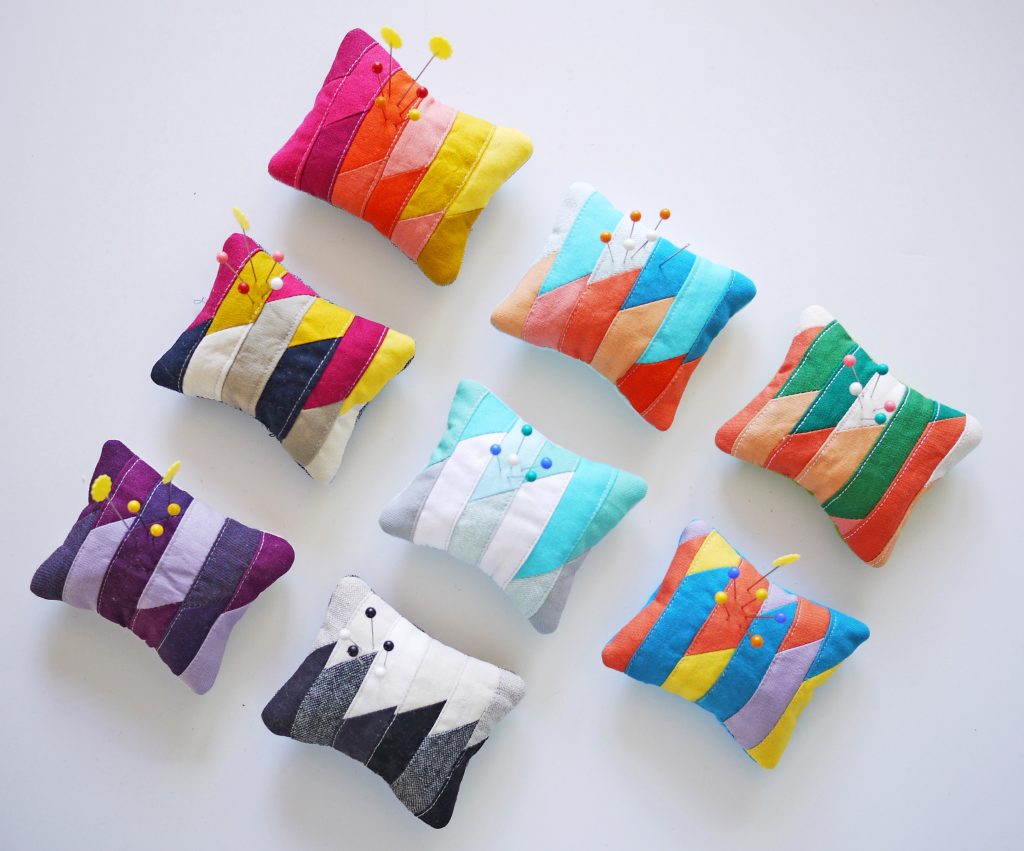
Andrea created these pincushions to provide a visual to describe the basics of color theory. Image Courtesy of Andrea Tsang Jackson.
Do you think that having a craft makes us more compassionate? If so, then how?
Andrea: When I started quilting seriously at the beginning of 2016, I tried to sew everyday. Often it was at 6 am or late at night, but the small amount of time fed all the other areas of my life. This was the first time I understood what self-care meant and I now really care that others take care of themselves in the same way. I have become more empathetic as a result. For someone else, this self-care might be reading, working out, going for a hike, or paper quilling. Understanding that every single moment of the day does not have to be “productive” for it to be worthwhile — that was a game changer. I am more compassionate towards others’ needs for sure.
The effect of bringing that into a community setting is even more impactful, I think. Having people to back you up and to encourage you is important.The accountability will spur you on and you will want to do the same for other people. A community makes your world bigger and your heart wider.
How does creating feed your soul/spiritual purpose?
Andrea: I discovered that when I am just sewing — not designing or trying to figure something out — it’s a great time to pray. When my hands are busy, my mind can be quiet. Some people might meditate in a similar way.
Secondly, I truly believe that everyone is inherently creative; it just looks different for everyone. Any parent, entrepreneur, engineer, or accountant is — at some point or another — creating something that didn’t exist before. A fantastical bedtime story, a new product, a new part that makes engines work more efficiently, a spreadsheet or system that makes tax reporting more bearable for someone else — these are the forms creativity can take. I want to see this flourish in those around me, and that is part of my spiritual purpose.
Are there any rituals that you perform to prepare/ground yourself in your work?
To be honest, no! The last few years of my life, I’ve had to learn to switch gears very quickly. That came with having children. I try to be fairly structured with my time and be as efficient as possible, but also leave room for some flexibility. It looks a little different everyday and I’m getting to be OK with that.
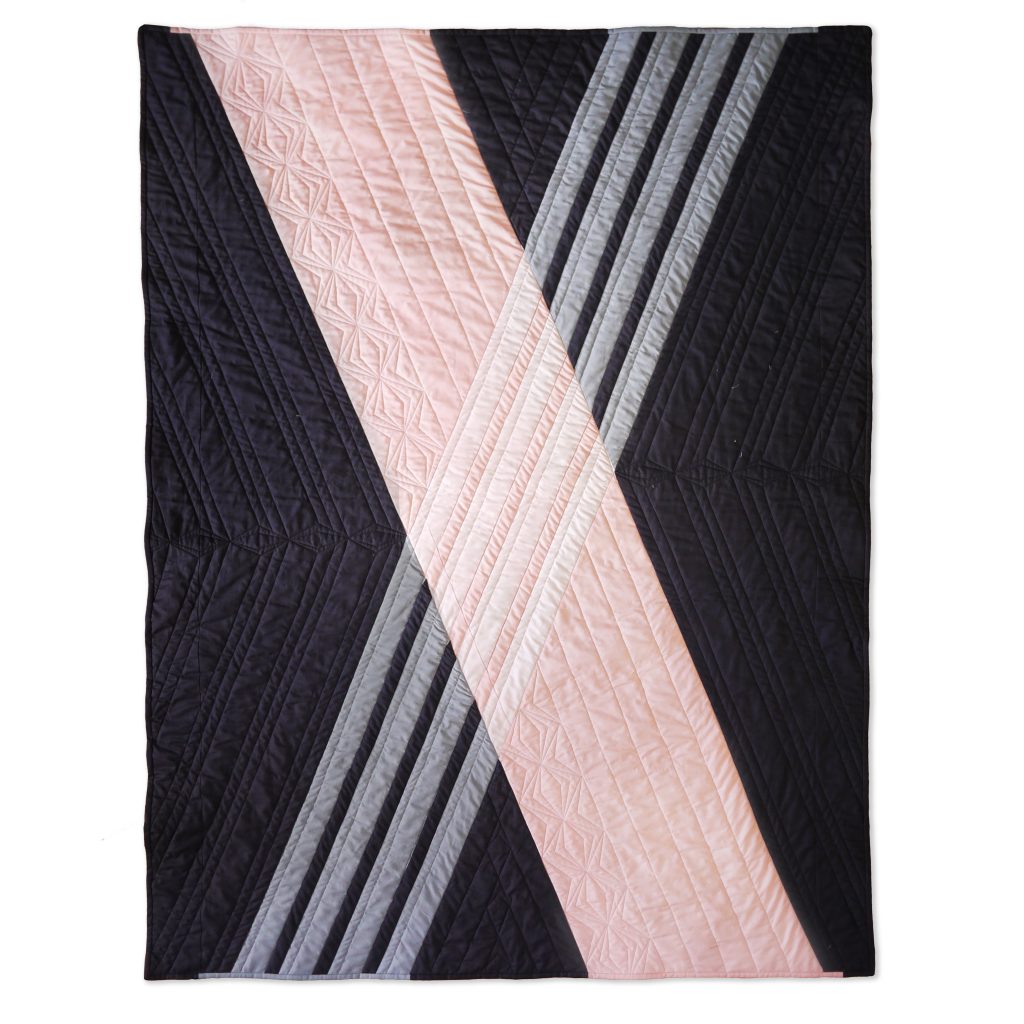
Everyone’s Got an X, 2017. Published as a pattern in QuiltCon Magazine 2018. Image Courtesy of Andrea Tsang Jackson.
What is the support system you have in place for creating your work?
Andrea: What started me into quilting seriously was joining the Maritime Modern Quilt Guild. These quilters are so supportive each others’ work, regardless of style; they have encouraged me at every step of my journey. The same goes for the community on Instagram.
In my work as a creative entrepreneur/textile artist, I am a solo practitioner. As a result, I have chosen trusted “colleagues” that can look at my work critically, that can chat with me about business, or that can encourage me in other ways. These people include the owner of a LQS, a web developer/entrepreneur, a grant writer, among others.
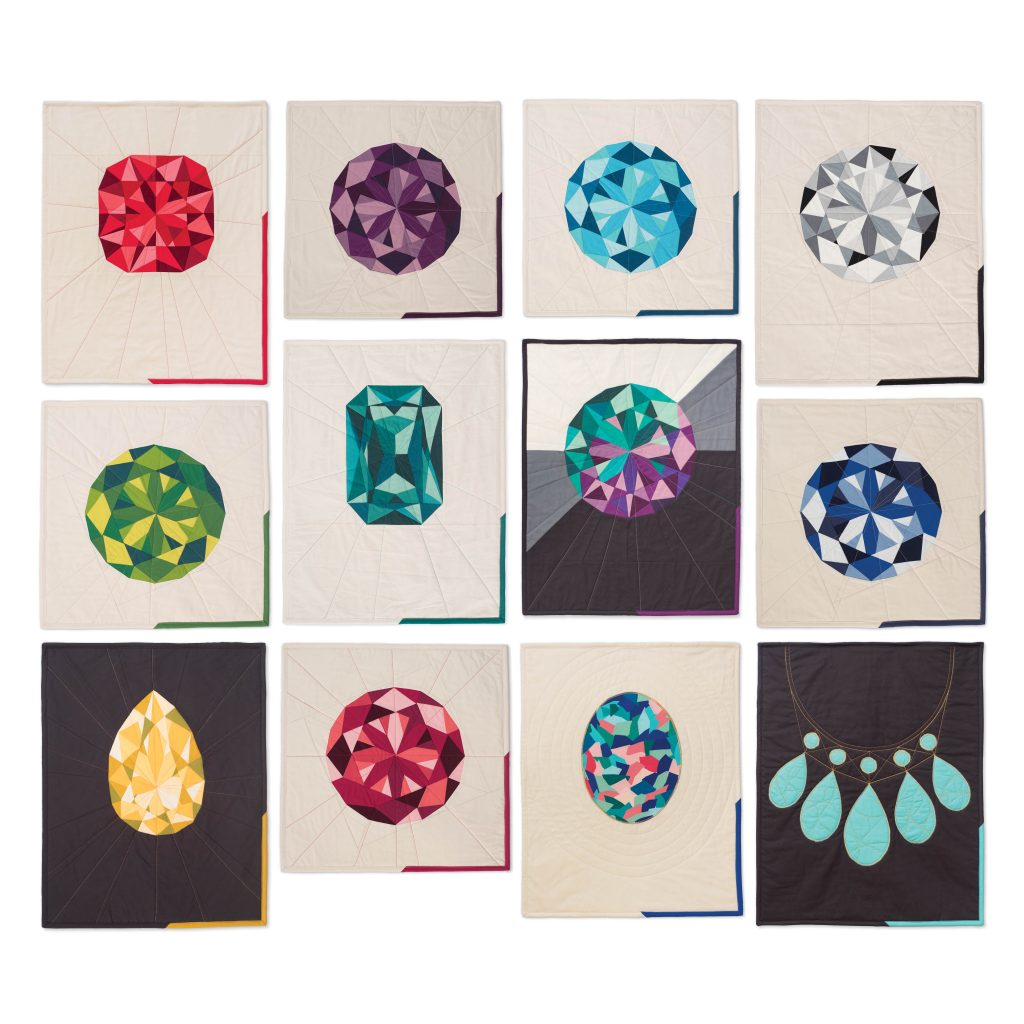
Gemology Collection. Similar paper piecing patterns available in Andrea’s Etsy Shop. Image Courtesy of Deborah Wong.
How do you deal with comparison to / envy of others? Can you describe a time when you used comparison/envy/admiration to push yourself in your own work and self-discovery?
Andrea: This is a large part of the struggle with social media. Last year, I spent a whole lot of time on Instagram, trying to get the lay of the land as a relatively new quilter. I tried to get an idea of who quilters are as people, what different kinds of quilters there are, what kind of designs and fabrics appeal to them, what they prioritize, what’s trending. I tried to get to know the people and brands in the industry that people really trust — those that consistently put out good work, ideas, and sentiments into the world. This was all to see where I fit. To distinguish, “Where I Fit” is a bit narrower that “Where I Belong”, because if there is one thing I have learned about the quilting community is that we all belong! It’s a big enough world for us all to belong here.
What I have realized is that we all have spaces in which we operate; sometimes, they overlap with each other. Although we are part of a larger industry, we have some degree of control over what our own spaces are. I feel a bit more confident in where I fit now and I actively choose to stick to my defined mission. I can keep my nose to the grindstone and do my own work. At the same time, I can see the amazing things that others are doing and if that pang of envy comes into play, I can evaluate, “Is that what I want to do, too? Does that fit my mission? How will that push my work and career forward?” Sometimes it’s an easy “no,” and other times it’s harder to get past.
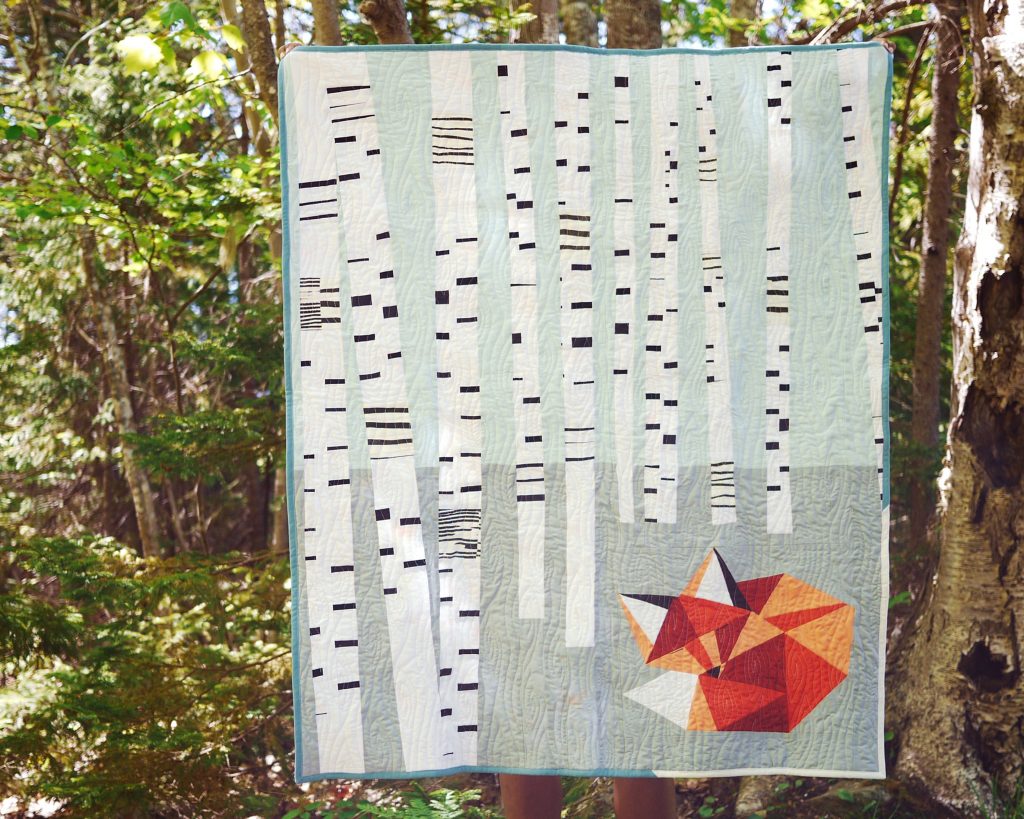
Sleeping Fox Paper Piecing Pattern Available in Andrea’s Etsy Shop. Image Courtesy of Andrea Tsang Jackson.
What does it mean to you to work in a traditionally domestic medium that historically has been regarded as predominately female (aka “women’s work”)?
Andrea: Rather than a domestic medium that is considered “women’s work”, I have been thinking about quilting in the context of the privilege we experience because of where we live in the world. The textiles that surround us are made by people who live very different lives that we do; making and producing textile goods is their livelihood. We often don’t see them as people. Children, women, and men in developing countries make our clothes and our fabric for mere pennies. As I move forward with my work, I am thinking about how I can honour those people with what I create with their textiles. In the same way that we can recognize many historical female quilters as artists, we can choose to truly see these people as real with ideas, skills and lives.
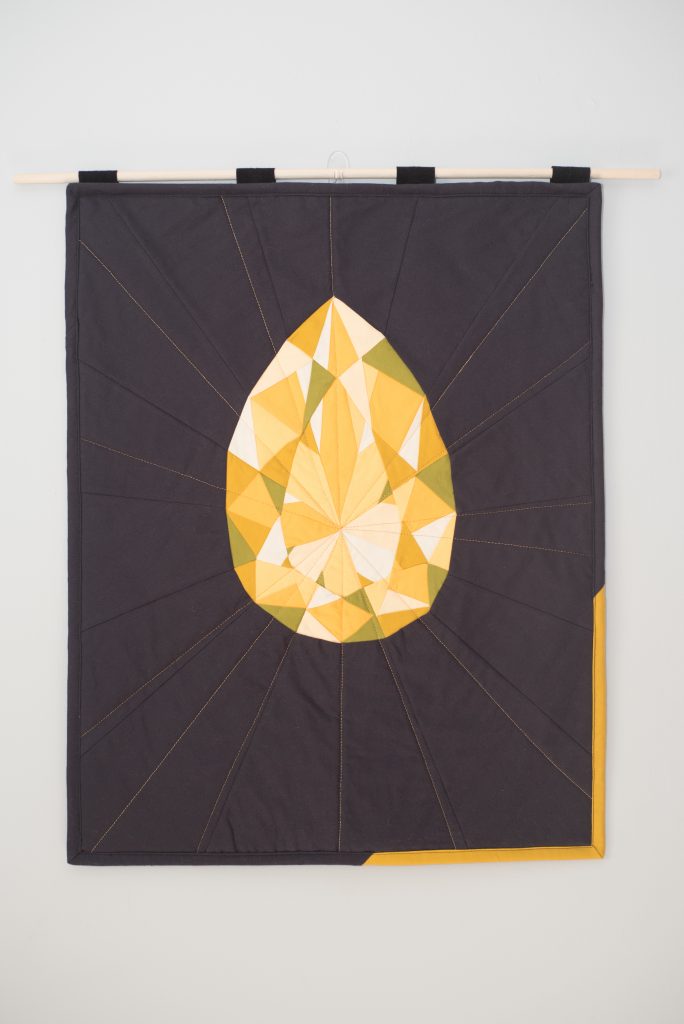
Geometric Art – Topaz Wallhanging. Available in Andrea’s Etsy shop. Image Courtesy of Andrea Tsang Jackson.
How do you see your current work in the context of quilting history?
Andrea: I identify strongly with the modern quilting movement and much of what it stands for. My quilting aesthetic is not very pronounced, and maybe this will come with time. I’m still trying a lot of new things and I can’t imagine that aspect of learning will ever change, so maybe a unified aesthetic voice will never come. My work will always strive to meet certain parameters, many of which will be out of my complete control — a client might want this particular thing, quilters will want to try this skill, etc. At the heart of it, I am a designer and I will always try to serve a need that is outside myself, and I think that’s what a designer does — fulfills the end user’s need. Maybe I make it sound more noble than it is, but that’s what quilters from centuries past have done, and I will carry that on.
Thank you, Andrea! By staying true to your mission you have created some amazing works so far, and we can’t wait to see where you go next! And congratulations again on your QuiltCon win! To learn more about Andrea, visit her website 3rd Story Workshop or connect with her on Instagram, Facebook, Pinterest and Twitter.
Would you like to be featured in The Creativity Project? Reach out! I’d love to hear from you! Contact me at lelandavestudios@gmail.com. Want to participate, but not necessarily be featured? You can do that! Click here to take the survey!
The Creativity Project can be found on Instagram, Pinterest, Twitter or Bloglovin’. Or check back here every Friday of 2018!
5 Comments
Comments are closed.

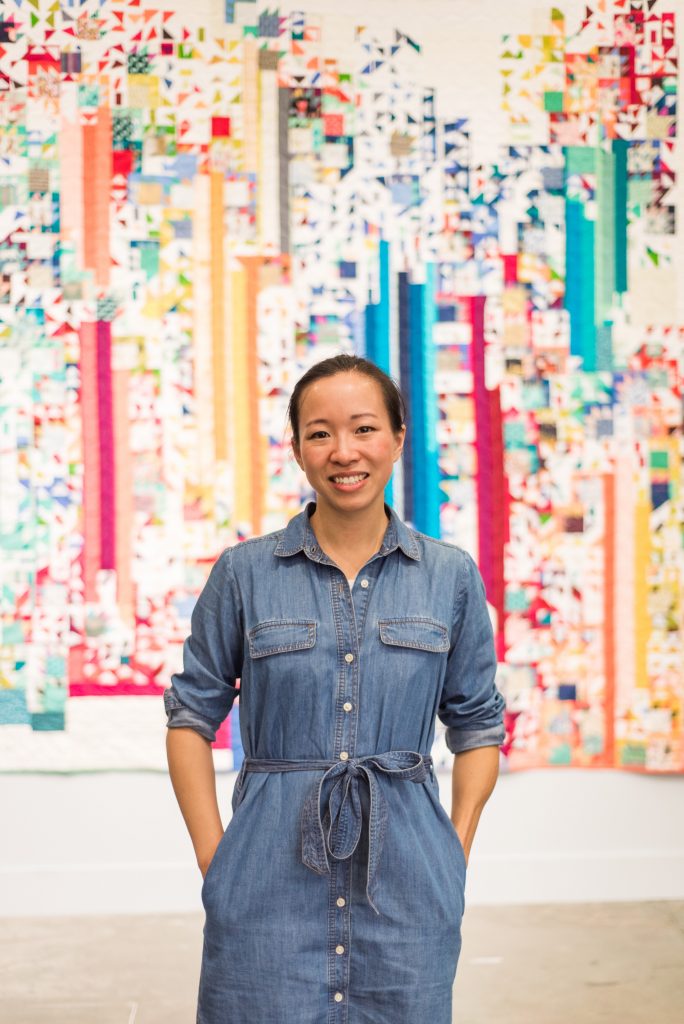
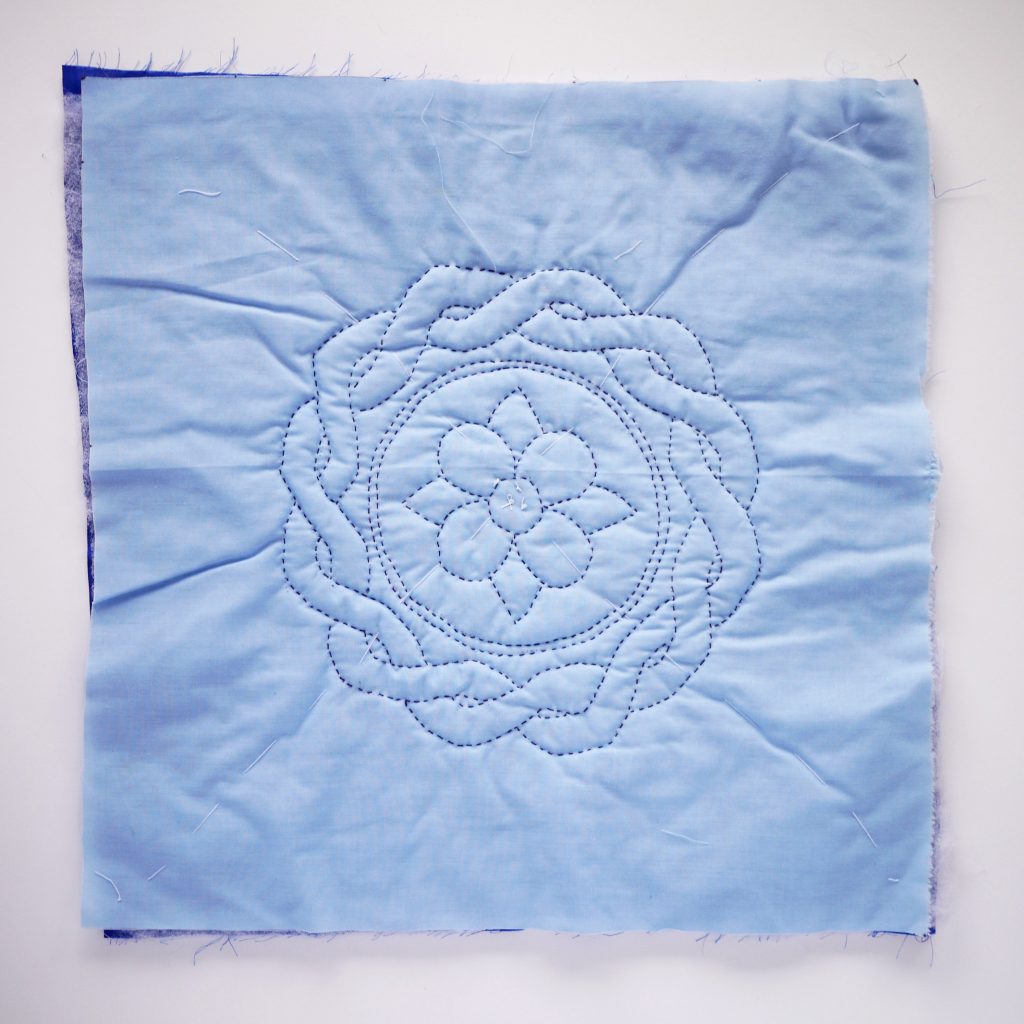
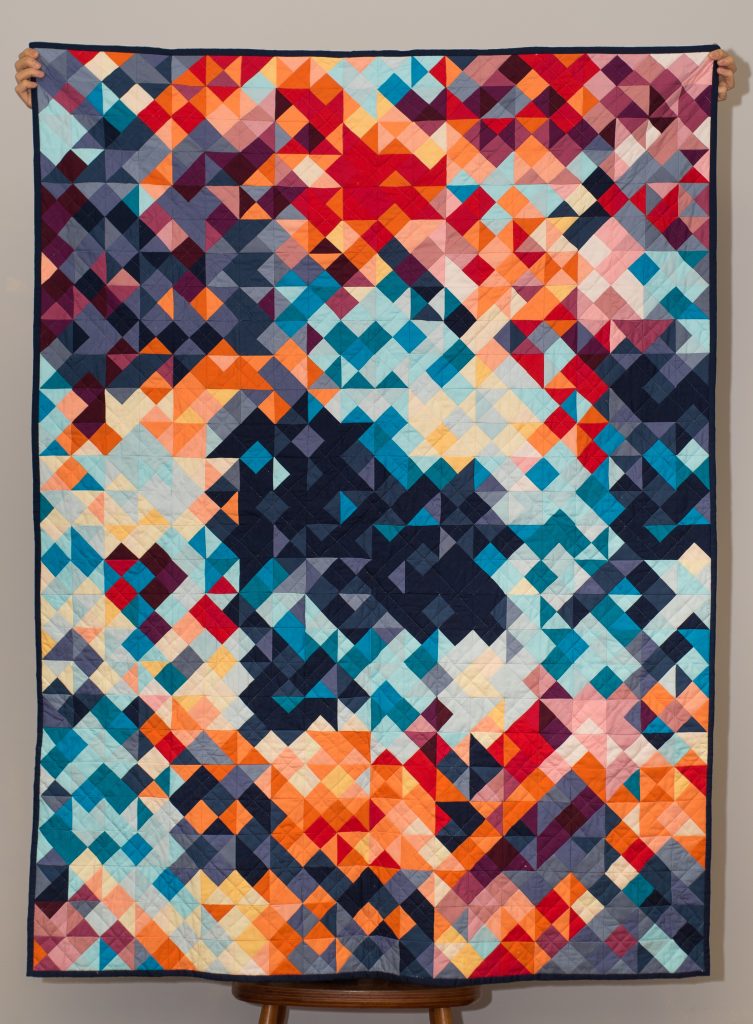
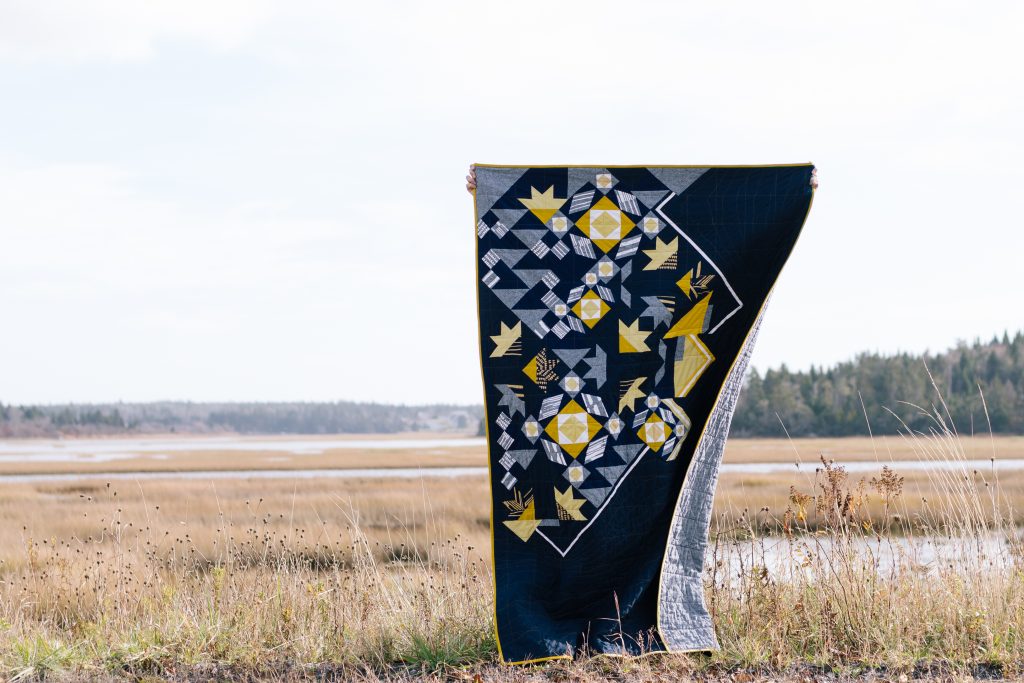
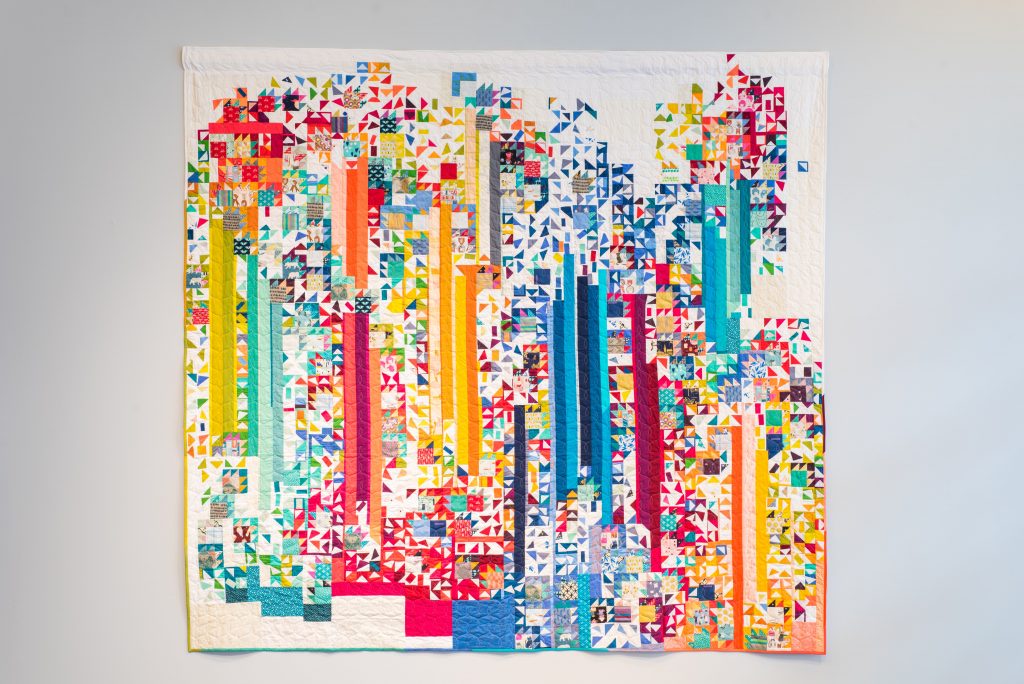
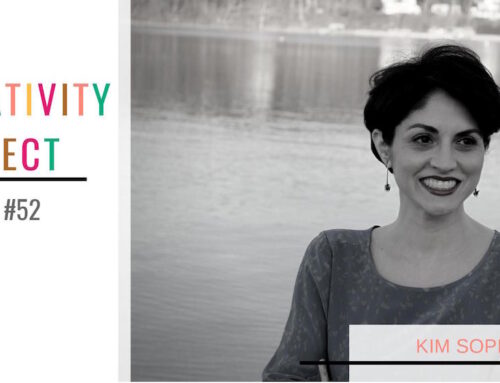
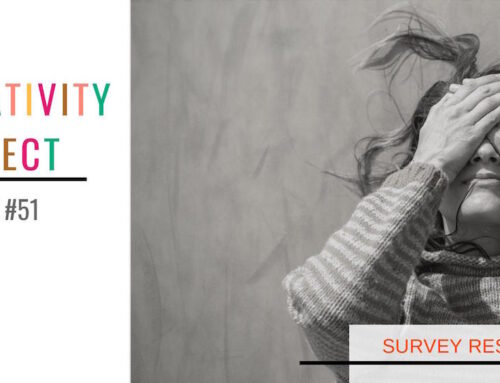
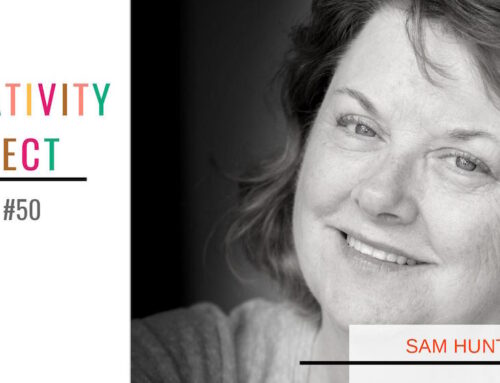
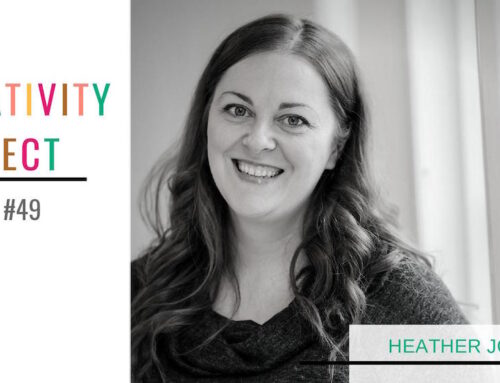
I have admired many of Andrea’s patterns for a while, I have that sleeping fox. It is great to read about her vision….how she is looking for her fit and her ideas about designers meeting the needs of the client.
[…] immigration stories and recently took a first prize at QuiltCon2018 You can read more on Andrea here, and if you are driving down Barrington this week another of her works is hanging in the window of […]
Another great interview Kim. Thank you for these!
Andrea, this is my first introduction to you and I love your work. As I read through this and looked at each of your pieces, I liked one more than the next and more than the next. It is hard for me to believe you have only just gotten into some serious quilting. Wow. The gem collection is gorgeous, Crow Quilts Analog is stunning, and I LOVE the Sleeping Fox quilt. Congrats on the win at Quilt Con. I look forward to seeing your work in the future.
This interview is so good! I love the fitting rather than just belonging part. Thank you for this great series of interviews and thank you Andrea for sharing your thoughts.
Fabulous interview!!